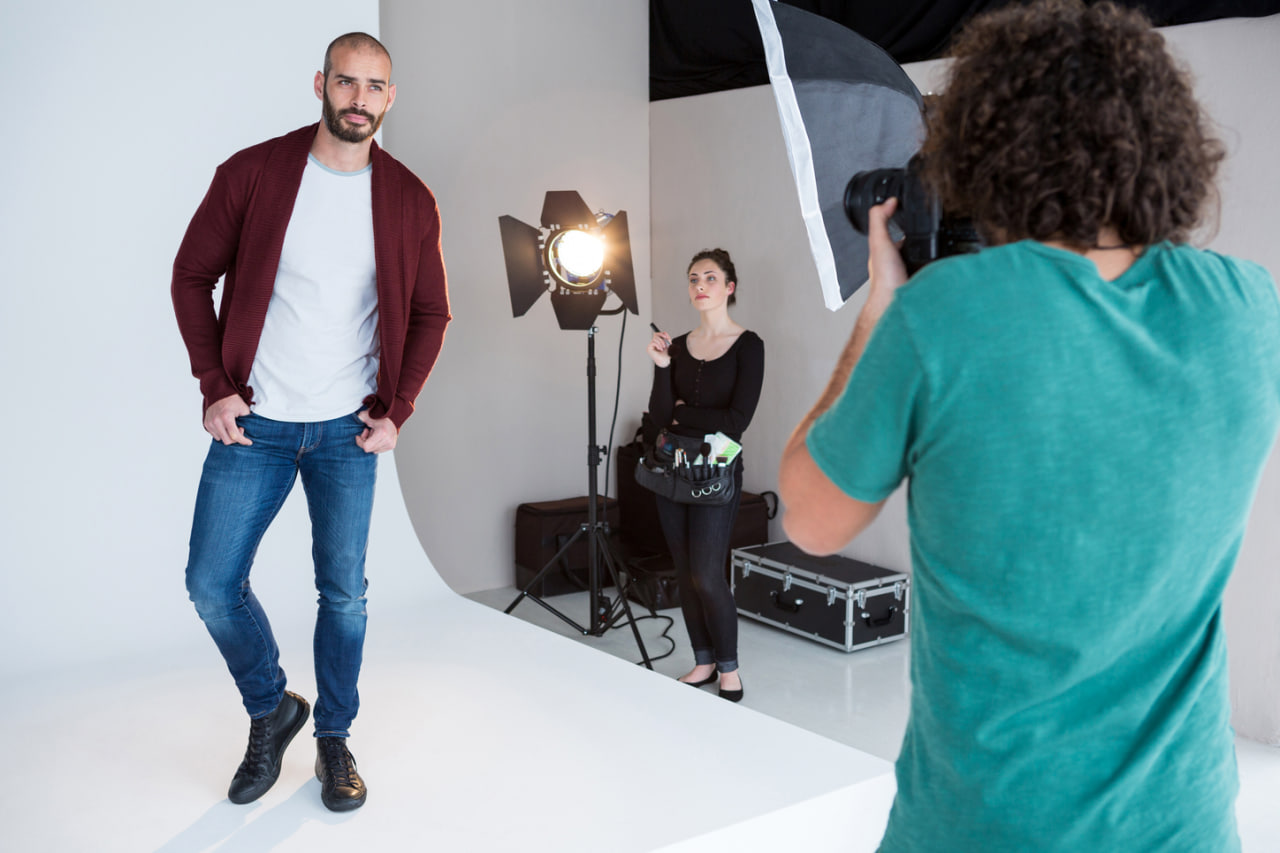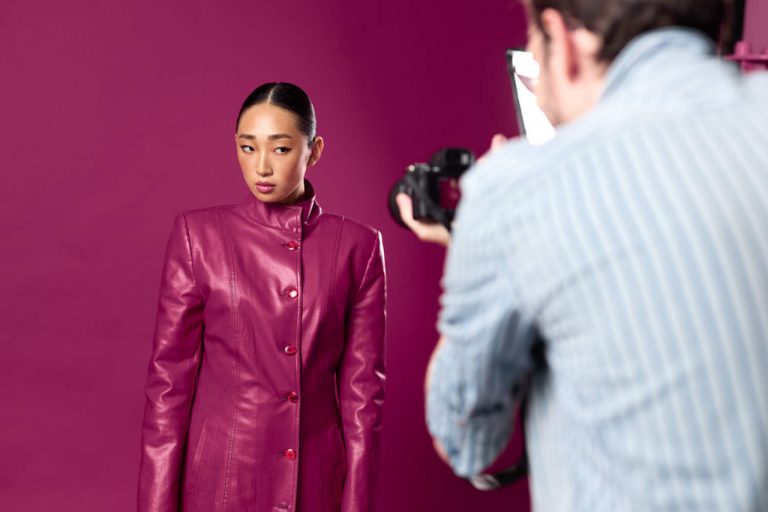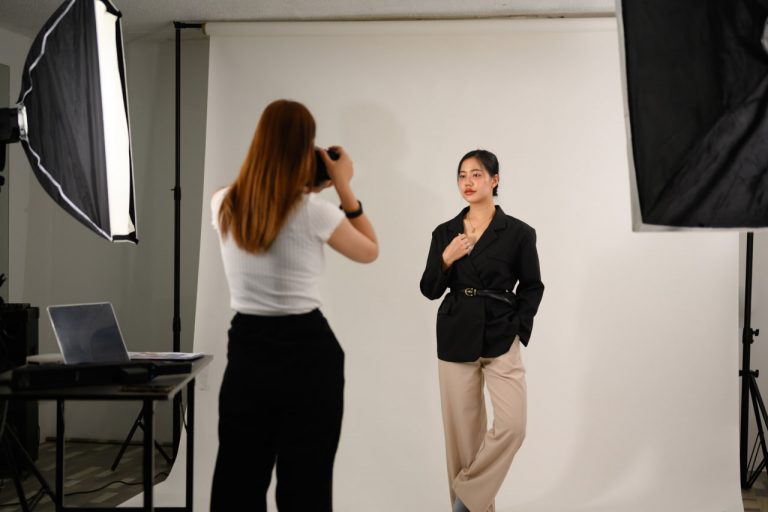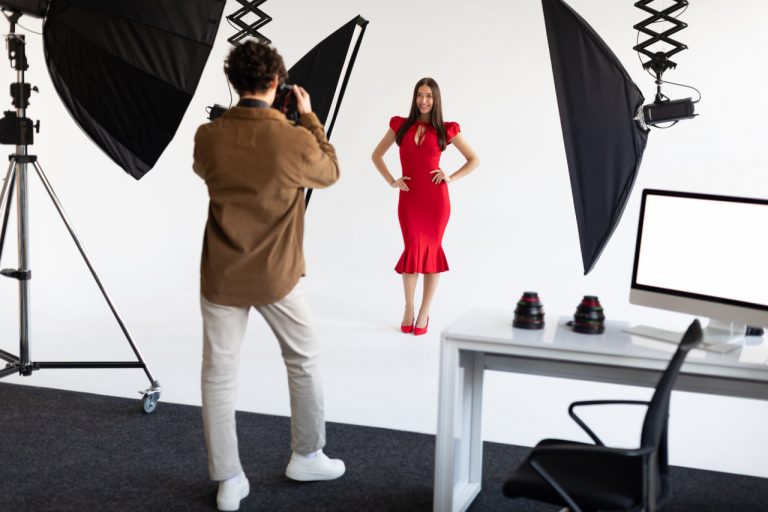Monday to Saturday - 8:00 -17:30

Post-production is where fashion photography truly comes to life. While capturing a strong image in-camera is essential, the editing process allows photographers to enhance mood, refine details, and elevate the final presentation. Mastering post-production techniques is key to producing polished, professional images that highlight garments, models, and the overall concept of a shoot.
The Importance of Post-Production
Post-production is more than simply correcting mistakes; it is a creative process that shapes the story and aesthetic of an image. Proper editing can:
- Highlight textures and fabrics in clothing.
- Enhance colors to align with the editorial mood.
- Correct lighting inconsistencies and exposure issues.
- Remove distractions and refine composition.
Understanding the role of post-production helps photographers approach it strategically rather than as an afterthought.
Color Correction and Grading
Color is one of the most powerful tools in fashion photography. Accurate color representation is critical for showcasing garments, while creative grading can evoke specific emotions or reinforce a theme.
- Color Correction ensures that hues match the real-life appearance of the clothing and the intended lighting conditions.
- Color Grading allows photographers to apply stylistic tones, such as warm golden hues for romantic shoots or cool blues for futuristic editorials.
- Selective Color Adjustments let you emphasize specific colors while muting others, drawing attention to focal points in the image.
Color manipulation should always complement the story and highlight the fashion rather than overpower it.
Retouching Techniques
Retouching is essential in fashion photography, but it requires balance to maintain authenticity. Key areas of focus include:
- Skin Retouching removes blemishes or inconsistencies while preserving natural texture. Over-smoothing can make images look artificial.
- Clothing Refinement addresses wrinkles, stray threads, or minor imperfections without altering the garment’s design.
- Hair and Makeup Touch-Ups enhance the model’s appearance subtly to maintain the intended style.
Advanced techniques, such as frequency separation and dodge-and-burn, provide precise control over texture, highlights, and shadows.
Enhancing Lighting and Contrast
Post-production allows for fine-tuning of lighting and contrast to create depth and dimension. Adjusting exposure, shadows, highlights, and midtones can dramatically improve the image’s impact. Techniques include:
- Dodging and Burning to selectively brighten or darken areas, emphasizing contours and shapes.
- Highlight Enhancement to make fabrics shimmer or reflect light naturally.
- Shadow Refinement to add mood, depth, or drama to the composition.
These adjustments help bring the photographer’s vision to life while maintaining a natural appearance.
Creative Effects and Final Touches
Once the fundamentals are in place, photographers can apply creative effects to add uniqueness to their work. Subtle overlays, textures, or vignettes can enhance mood without distracting from the fashion.
Sharpening and noise reduction are also crucial for ensuring crisp, clean images suitable for print or digital display. The final step is always to review the image in context, ensuring consistency across the editorial or campaign series.



